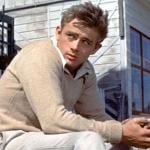
Between getting sick, attending a wedding, and taking care of a few emergency assignments, this year’s film festival has gotten off to a slow start for me. And the first few films I’ve caught have been somewhat mainstream — if not multiplex material, then at least the sort of thing that is almost guaranteed to hit the art houses.
But yesterday I caught something really unique: the Canadian premiere of James Benning’s 13 Lakes (2004). The movie is over two hours long. It consists of 13 shots, each lasting exactly 10 minutes. And each shot is of a lake. The horizon cuts across the middle of the screen. The top half of the screen is sky. The bottom half of the screen is water. There might be mountains or a bridge on the horizon. The water might be full of waves, some criss-crossing, some lapping towards the camera; or it might be fairly placid. We might see boats or (on the bridge) cars. We might see the bottom of the lake through clear water, or we might see ice floating on the surface, or we might see mists being driven along the surface by the wind. We might hear thunder or a train or even echoing gunshots in the distance. We might hear the person sitting next to us yawn or crack his knuckles. We might see people leave the theatre, especially around the 5th or 6th lake. (After that, I guess audience members figure they’ve made it halfway through the film and, since there is now less film ahead of them then there is behind them, they might as well stay for the rest of it.)
The interesting thing is, it was kind of like watching a Tarkovsky movie — his movies are always full of rippling-water shots — but it was less (dare I say the word?) boring, because there wasn’t a framing narrative making me itch to get on to the next thing and to see where it was all going. There was just the lakes. I found myself recalling the tunes we sing when we stand for two hours in a church service. (As time went on, I began recalling less-sacred songs, too.) And occasionally, I was surprised when a shot ended, because I hadn’t realized that ten minutes had already gone by.
Keep in mind that I say this as a person who has been known to stare at the more geometrically oriented screensavers for minutes on end, and as a person who enjoys stuff like the cloudscape sequence in Koyaanisqatsi (1983) — although there, at least, we have multiple shots, all set to a mesmerizing score by Philip Glass.
My wife and I live right by the Burrard Street Bridge, and we sometimes go for walks along Sunset Beach; we especially like to sit by the inukshuk at the south end of English Bay Beach, where we can sit and look up and down the shore, with the North Shore mountains in one direction and False Creek in the other and, between them, water stretching out to Vancouver Island, which is so far away it’s almost invisible, and we can almost convince ourselves we’re looking at the ocean. It’s especially beautiful at sunset. I have to say I like going there more than I liked watching this film, partly because the film did not give me the freedom to turn my head and look around. The film forces you to pay attention to what’s directly in front of you; and the director said that he made the film partly as an exercise for his students in looking and listening and paying attention. (This may be one of the reasons I thought of church music: the deacon or priest says “Let us attend!” or “Let us be attentive!” several times in the liturgy.)
In the newspapers and at the screening, there was, of course, some talk about the film’s possible environmental implications; one person said he was ready to punch the people who rode their skidoos back and forth across the screen in one shot. Some people seem to take exception to “the human element”, and the director himself said he was disturbed by the gunfire. But, leaving aside the legal status or propriety of these actions, it is not obvious to me that there is anything intrinsically wrong with them. Some people talked about how the human element disturbed the “serenity” of the lakes, but at times I had wondered what sort of violence might be festering beneath the surface of these lakes — fish eating fish, and all that. What can I say, I’m a little morbid; but I assume the birds we see occasionally aren’t there just for the view!
FWIW, if political or ecological inferences tickle your fancy, you can also draw them from the Lake Superior shot, in which we see a boat that resembles one of the shipwrecks at the bottom of that lake, and from the shot of Lake Pontchartrain, which recently spilled into New Orleans. There was also some interesting ambiguity around the Salton Sea — the one with the skidoos — since it is not only man-made, but was also created accidentally one century ago. And Benning had a good, self-deprecating sense of humour about it all, noting that he spent lots of money on gasoline, driving 10,000 miles around the country to bring his 16mm camera to the lakes he wished to photograph.
Tomorrow at noon they’re showing this film again, followed by another film of Benning’s called Ten Skies (2004). I like skies. But alas, I think work might keep me away. We’ll see.
OCT 5 UPDATE: The Vancouver Sun interviews Benning here.












